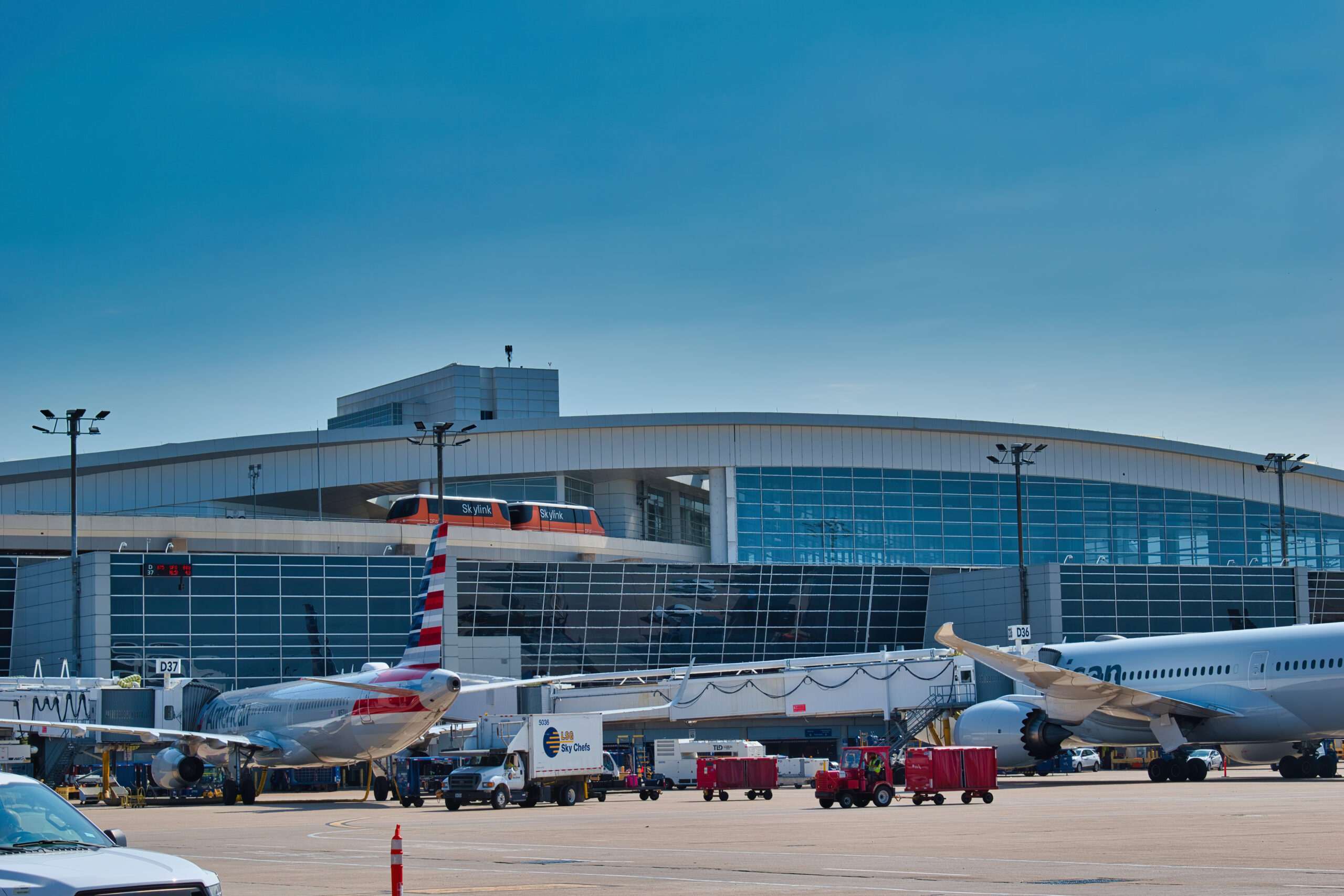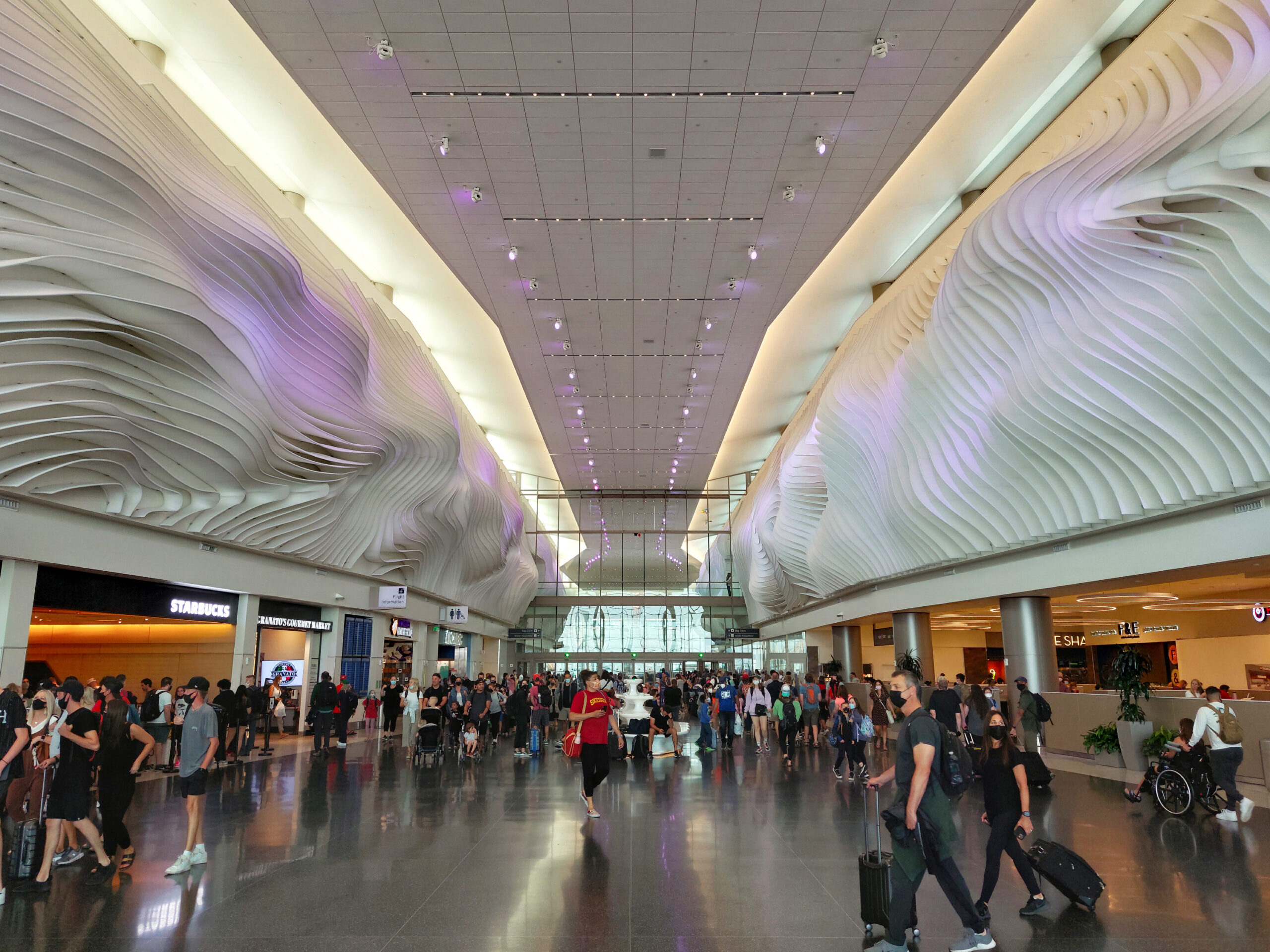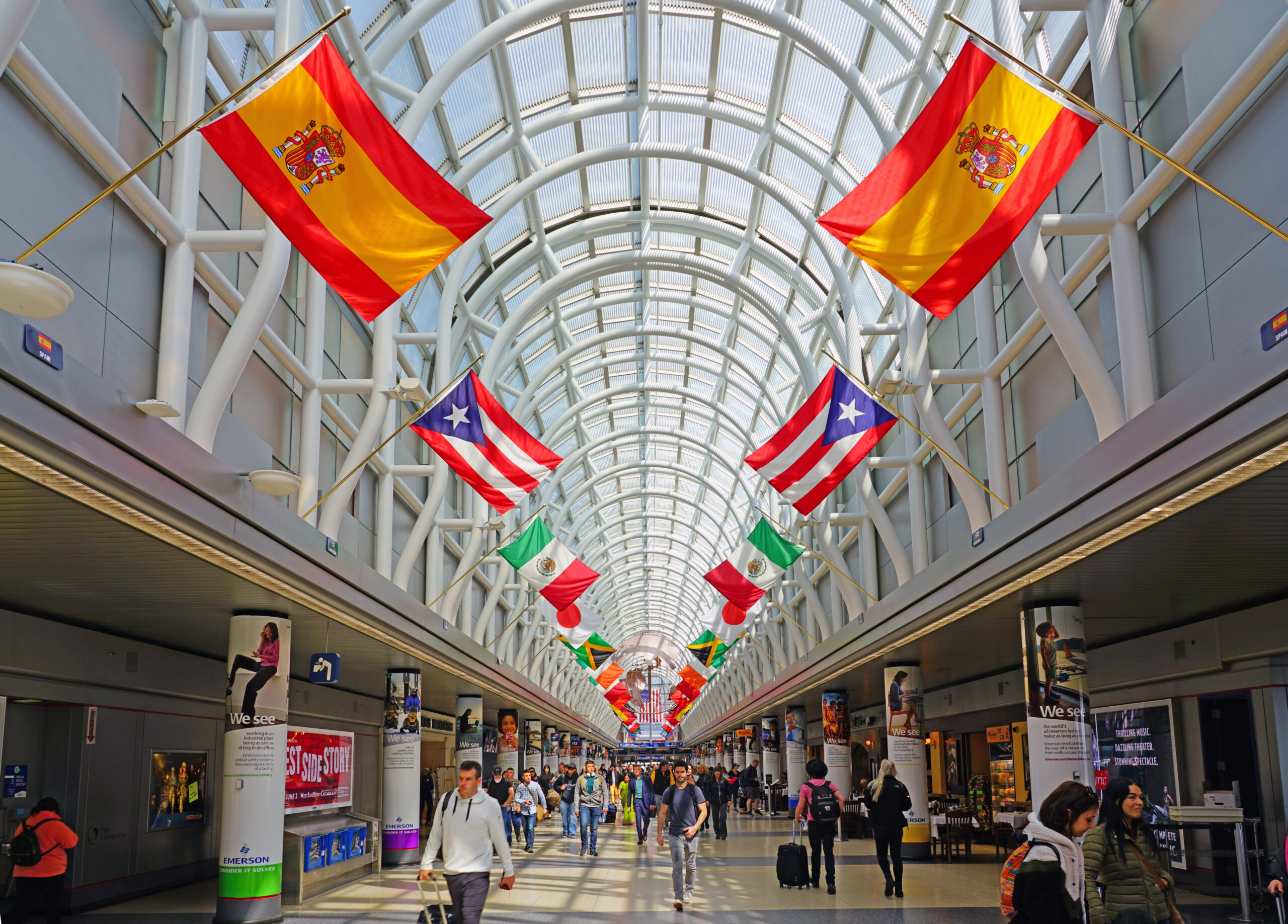The United States is home to some of the largest and busiest airports in the world. These airports span vast areas of land to accommodate millions of passengers annually. With massive terminals and multiple runways, these airports handle large volumes of air traffic. The airports listed below are ranked by their physical size, covering vast acres of land. Each airport serves as a critical hub for both domestic and international travel, connecting travelers from around the world.
Denver International Airport (DEN)

Denver International Airport is the largest airport in the U.S. by physical size. It covers a massive 33,531 acres of land. Opened in 1995, it is located about 25 miles northeast of downtown Denver, Colorado. It serves as a major hub for United Airlines and Frontier Airlines. In 2022, Denver International had over 69 million passenger boardings. The airport’s six runways and expansive terminal complex make it capable of handling significant air traffic. Its iconic white fabric roof is easily recognizable.
Dallas/Fort Worth International Airport (DFW)

Dallas/Fort Worth International Airport spans 17,207 acres. It sits between Dallas and Fort Worth, Texas, and opened in 1974. The airport serves as a major hub for American Airlines. DFW handled over 73 million passengers in 2022, making it one of the busiest airports in the world. The airport features five terminals, with plans for future expansions. DFW’s large size allows it to offer extensive international and domestic connections.
Orlando International Airport (MCO)

Orlando International Airport covers 13,302 acres. It is located about six miles southeast of downtown Orlando, Florida. The airport was initially a military base and converted into a civilian airport in 1976. MCO handled over 50 million passengers in 2022, making it one of the busiest airports in Florida. The airport serves as a major gateway for tourists visiting Disney World and other nearby attractions. Orlando International’s two main terminals and four runways allow it to handle heavy passenger traffic.
Washington Dulles International Airport (IAD)

Washington Dulles International Airport covers 13,000 acres of land. It opened in 1962 and is located about 26 miles west of downtown Washington, D.C., in Virginia. Dulles serves as a hub for United Airlines and handled over 22 million passengers in 2022. The airport’s main terminal, designed by architect Eero Saarinen, is iconic. Dulles features four runways and extensive passenger facilities. Its large size allows it to serve as a key international gateway for the region.
George Bush Intercontinental Airport (IAH)

George Bush Intercontinental Airport spans 10,000 acres. It is located 23 miles north of downtown Houston, Texas. The airport opened in 1969 and serves as a hub for United Airlines. In 2022, IAH handled over 45 million passengers. The airport has five terminals and five runways, making it one of the busiest airports in the country. Its location and size make it a critical hub for international flights, especially to Latin America.
Salt Lake City International Airport (SLC)

Salt Lake City International Airport covers 7,700 acres. It is located just four miles west of downtown Salt Lake City, Utah. The airport originally opened in 1911 but has undergone significant renovations and expansions. In 2022, it handled over 25 million passengers. SLC serves as a hub for Delta Air Lines. The airport’s three runways and new terminal complex allow it to handle both domestic and international flights. Its large physical size supports future growth and capacity.
O’Hare International Airport (ORD)

O’Hare International Airport spans 7,627 acres of land. It is located about 17 miles northwest of downtown Chicago, Illinois. The airport opened in 1955 and serves as a major hub for both United Airlines and American Airlines. In 2022, O’Hare handled over 68 million passengers, making it one of the busiest airports in the world. The airport features eight runways, the most of any major airport in the U.S. O’Hare’s large size supports its role as a critical hub for both domestic and international flights.
San Francisco International Airport (SFO)

San Francisco International Airport covers 5,207 acres. It is located about 13 miles south of downtown San Francisco, California. The airport opened in 1927 and is a hub for United Airlines. In 2022, it handled over 42 million passengers. SFO features four runways and four passenger terminals, including an international terminal. Its large size and strategic location make it a major gateway for trans-Pacific flights, especially to Asia.
John F. Kennedy International Airport (JFK)

John F. Kennedy International Airport spans 4,930 acres. It is located in Queens, New York, about 15 miles southeast of Manhattan. Opened in 1948, JFK is one of the busiest airports in the United States. In 2022, it handled over 55 million passengers. It serves as a major hub for both domestic and international flights, especially transatlantic routes. The airport features six terminals and four runways, allowing it to accommodate significant passenger and cargo traffic.
Miami International Airport (MIA)

Miami International Airport covers 3,230 acres. It is located eight miles northwest of downtown Miami, Florida. MIA opened in 1928 and has since grown into one of the busiest airports in the U.S. In 2022, it handled over 50 million passengers. The airport serves as a major gateway to Latin America and the Caribbean. Its three main terminals and four runways allow it to manage high volumes of international traffic. The airport’s location near the coast makes it a key hub for international flights.
Los Angeles International Airport (LAX)

Los Angeles International Airport spans 3,500 acres. It is located about 18 miles southwest of downtown Los Angeles, California. LAX opened in 1930 and has since become one of the busiest airports in the world. In 2022, it handled over 65 million passengers. The airport features nine terminals and four runways, with plans for future expansions. LAX serves as a critical hub for both domestic and international flights, especially those heading to the Asia-Pacific region.
Detroit Metropolitan Wayne County Airport (DTW)

Detroit Metropolitan Wayne County Airport covers 4,850 acres. It is located about 20 miles southwest of downtown Detroit, Michigan. The airport opened in 1929 and serves as a major hub for Delta Air Lines. In 2022, DTW handled over 34 million passengers. It features six runways and two terminals. The airport’s large size allows it to efficiently manage domestic and international flights, making it a critical transportation hub for the Midwest.
Phoenix Sky Harbor International Airport (PHX)

Phoenix Sky Harbor International Airport spans 3,000 acres. It is located about three miles east of downtown Phoenix, Arizona. The airport opened in 1935 and is the largest airport in Arizona. In 2022, PHX handled over 44 million passengers. It serves as a hub for both American Airlines and Southwest Airlines. The airport features three terminals and three runways, allowing it to accommodate both domestic and international flights. Its central location makes it a key hub in the Southwest region.
Philadelphia International Airport (PHL)

Philadelphia International Airport covers 2,302 acres. It is located about seven miles southwest of downtown Philadelphia, Pennsylvania. The airport opened in 1940 and serves as a major hub for American Airlines. In 2022, PHL handled over 28 million passengers. The airport features seven terminals and four runways. Its size and strategic location on the East Coast make it a key hub for both domestic and international flights.
Minneapolis-Saint Paul International Airport (MSP)

Minneapolis-Saint Paul International Airport spans 2,930 acres. It is located about 10 miles south of downtown Minneapolis, Minnesota. The airport opened in 1920 and serves as a major hub for Delta Air Lines. In 2022, MSP handled over 31 million passengers. It features four runways and two terminals. The airport’s large size allows it to manage both domestic and international traffic efficiently, making it a vital transportation hub in the Upper Midwest.
This article originally appeared on Rarest.org.
More from Rarest.org
8 Pieces of Vintage Concert Merch That’s Now Highly Valuable

Vintage concert merchandise has become more than just a nostalgic reminder of past shows; it’s now a valuable collector’s item. Read More.
10 Limited-Run Designer Fashion Pieces That Are Worth a Fortune

Designer fashion pieces that are released in limited runs often become highly coveted, not just for their style but for the value they hold over time. Read More.
13 Peculiar Stone Circles and Monoliths from Ancient Cultures

Throughout history, ancient cultures around the world have left behind fascinating remnants of their past in the form of stone circles and monoliths. Read More.
